National Museum of Fine Arts of the Philippines and Worlds Fair
 | |
| Show map of Rizal Park Show map of Manila Show map of Philippines Location within Rizal Park | |
| Agency overview | |
|---|---|
| Formed | October 29, 1901[1] |
| Jurisdiction | Philippine arts and cultural development |
| Headquarters | National Museum of Fine Arts, Padre Burgos Avenue, Rizal Park, Ermita, Manila, Philippines fourteen°35′12″Northward 120°58′52″E / 14.58667°Northward 120.98111°East / 14.58667; 120.98111 |
| Annual upkeep | ₱537.44 1000000 (2021)[two] |
| Agency executive |
|
| Parent section | Department of Education National Commission for Culture and the Arts |
| Website | www |
The National Museum of the Philippines (Filipino: Pambansang Museo ng Pilipinas) is an umbrella regime organization that oversees a number of national museums in the Philippines including ethnographic, anthropological, archaeological and visual arts collections. Since 1998, the National Museum has been the regulatory and enforcement bureau of the government of the Philippines in the restoring and safeguarding of important cultural properties, sites, and reservations throughout the Philippines.
The National Museum operates the National Museum of Fine Arts, National Museum of Anthropology, and the National Museum of Natural History, all located in the National Museum Complex in Manila. The institution besides operates branch museums throughout the country.
The National Museum likewise established and operates regional museums across the Philippines - National Museum Butuan (Butuan City), National Museum Cebu (Cebu Metropolis), National Museum Western Visayas (Iloilo City), National Museum Zamboanga (Zamboanga City), and National Museum Western Visayas - Jaro Regional Office (Iloilo City), to name a few.
History [edit]
The first predecessor to today's National Museum was the Insular Museum of Ethnology, Natural History, and Commerce under the Department of Public Education, created in 1901 by the Philippine Committee. In 1903, the Museum was afterward transferred to the Section of Interior and renamed the Bureau of Ethnological Survey. This new bureau was responsible for the Philippine participation in the Louisiana Purchase Exposition of 1904. Afterwards the exposition, information technology was abolished as a separate bureau and renamed the Philippine Museum.
The museum's structure again inverse in 1933 when the Philippine Legislature divided the museum. The museum's Segmentation of Fine Arts and History went to the National Library. Its Division of Ethnology went to the Bureau of Science. Finally its Division of Anthropology, which included archaeology, ethnography and physical anthropology, and the other sections of natural history of the Bureau of Science, were organized into a National History Museum Division. This was transferred to the Office of the Secretary of Agronomics and Commerce in 1939.
The Japanese occupation of the Philippines during World War II brought the divisions back under a single National Museum of the Philippines, but the museum lost a big role of its collection during the Liberation of Manila when the Onetime Legislative Building was destroyed by American arms. The Legislative Building was immediately restored through the American funds bringing the museum back to its operations.
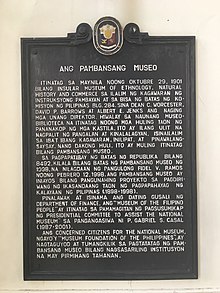
Historic Mark of the Philippine National Museum
The museum's part in cultural growth was recognized as contributing to authorities'south desire for national evolution.[3] In 1966, President Ferdinand Marcos signed Democracy Act No. 4846 or the Cultural Properties and Protection Act. The law designated the museum as the atomic number 82 bureau in the protection and preservation of the nation's cultural properties through the conduct of census, report, and announcement of such properties and the monitoring and regulation of archaeological exploration, digging, or blasting in historical or archaeological sites. With its new powers, it was able to strengthen its cultural mandate by declaring properties, structures, and sites of historical and cultural value to the nation. The educational mandate was strengthened because it was able to inform the public of the researches it conducted and through the conquering and exhibition of archaeological finds.
In 2019, the powers of the National Museum was further expanded through Republic Human activity No. 11333 which was signed into law past President Rodrigo Duterte. Under the law the museum body's official proper name was lengthened to National Museum of the Philippines from just being National Museum. Information technology was also classified as a regime trust fastened to the government for only budgetary reasons preserving a degree of independence and autonomy. Information technology is too mandated to found regional museums in each of the state'southward administrative regions.[4]
Museums [edit]
National Museum of Fine Arts [edit]
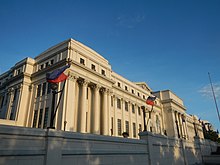
National Museum of Fine Arts
The National Museum of Fine Arts, formerly called the National Art Gallery, is housed in the sometime Legislative Edifice. The building was originally intended equally a public library as proposed in Daniel Burnham's 1905 Plan for Manila. Designed by Ralph Harrington Doane, the American consulting builder of the Bureau of Public Works, and his banana Antonio Toledo. Structure of the edifice began in 1918 and completed in 1921.
The façade of the building had classical features using stylized Corinthian columns, decoration and Renaissance inspired sculptural forms.[five] Upon the establishment of the Commonwealth regime, it was decided that the building would also house the Legislature and revisions were fabricated by Juan Arellano, supervising builder of the Bureau of Public Works.
On July 16, 1926, the building was formally inaugurated. During the Globe War Two, the building was heavily damaged, though built to exist convulsion resistant.[5] Later on the war, it was rebuilt albeit less ornate and less detailed. During the Martial Constabulary era, the Legislative Building was closed down. Today, the building holds the country'south National Art Gallery, natural sciences and other support divisions.
National Museum of Anthropology [edit]

National Museum of Anthropology
The National Museum of Anthropology, formerly known as the Museum of the Filipino People, is a component museum of the National Museum of the Philippines that houses the Archaeology Sectionalization, Ethnology Division, Exhibition, Editorial and Media Production Services Segmentation (EEMPSD), Maritime and Underwater Cultural Heritage Sectionalization (MUCHD), and Museum Services Division (MSD). It is located in the Agrifina Circle, Rizal Park, Manila across the main National Museum edifice which is the National Museum for Fine Arts. The edifice was the former headquarters of the Department of Finance.
National Museum of Natural History [edit]

The National Museum of Natural History
It was recently[ when? ] appear that the third building of this museum complex — the i presently occupied by the Department of Tourism, shall exist developed into the National Museum of Natural History, in one case the Section moves out and transfers to its permanent location in Makati. The National Museum of Natural History will have a hexagonal DNA tower structure in its center which will exist the base for the ventilating roof-dome of the whole edifice. Living trees will besides be planted within the interior of the building. Information technology was expected to exist finished in the last quarter of 2015[6] but the opening of the museum was moved sometime in 2017. In October 2017, the National Museum of Natural History officially opened to the public with its iconic Tree of Life structure.
Regional Museums [edit]

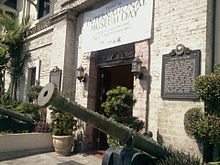
Sugbu (Cebu) National Museum

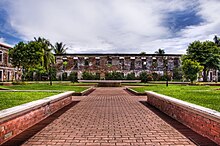
Zamboanga National Museum
The National Museum has too established numerous regional museums outside Metro Manila. These regional museums are constitute in Angono (Rizal province), Padre Burgos in Vigan (Ilocos Sur), Kabayan (Benguet), Kiangan (Ifugao), Magsingal (Ilocos Sur), Puerto Princesa (Palawan), Butuan in Caraga region, Tabaco (Albay), Fort Pilar in Zamboanga City, Boac (Marinduque), and Jolo (Sulu). In 2018, regional branches in Basco in Batanes and Iloilo city in Iloilo province were established. A regional branch in Cebu is being developed, while a co-operative in Bolinao (Pangasinan) was permanently closed. Branches in Banton town in Romblon, Romblon town in Romblon, Monreal boondocks in Ticao Island, Maitum in w Sarangani, Jolo in Sulu, Marawi city in Lanao del Sur, Guian in Eastern Samar, Davao metropolis in the Davao region, Mati in Davao Oriental, Cabanatuan metropolis in Nueva Ecija, Tabuk in Kalinga, Aparri in Cagayan province, Malaybalay in Bukidnon, Cotabato urban center in Maguindanao, Hungduan in Ifugao, Rizal boondocks in Palawan, Bulalacao in Mindoro, and Siquijor town in Siquijor are also being eyed by the National Museum. The re-establishment of a regional museum in Bolinao is also existence eyed.[vii] [8]
Other notable buildings [edit]
The National Museum hosts its Western Visayas (Region-6) Regional Museum in the former Iloilo Rehabilitation Center, a jail facility that was abandoned in 2006 when the inmates were transferred to the new BJMP location. Built in 1911, the old Iloilo Provincial Jail is an Of import Cultural Property - a recognition of its exceptional cultural, artistic, and historical significance to the Philippines. NMP also runs a satellite function for Western Visayas at the One-time Jaro Municipal Hall, a designated heritage site, in Iloilo City which was designed by builder Juan Arellano.
Former facilities [edit]
National Planetarium [edit]

The Planetarium was planned in 1970's by former National Museum Director Godofredo Alcasid Sr. with the assistance of Mr. Maximo P. Sacro Jr. of the Philippine Conditions bureau and one of the founders of the Philippine Astronomical Society.
The building started on construction on 1974 and completed 9 months later. It was formally inaugurated on October 8, 1975. The Presidential Decree No. 804-A, issued on September xxx, 1975, affirmed the Planetarium'due south status. The Planetarium is located between the Japanese Garden and the Chinese Garden at the Rizal Park.[ix]
Seminars and lectures [edit]
The National Museum offers numerous lectures, workshops, and seminars annually. However, nearly of these events happen at the museums within Metro Manila. More than 80% of provinces in the country have yet to possess a museum nether the authority of the National Museum. A partial reason for this lacking is the not-beingness of a Department of Culture. In late 2016, a bill establishing the Department of Culture and the Arts and some other bill strengthening the National Museum, including its regional museums, were filed by Senator Loren Legarda in the Senate. Both bills were formally introduced in early on 2017.[10]
References [edit]
- ^ "Commemorative Program for the 111th Foundation Twenty-four hours of the National Museum" (PDF). Presidential Communications Development and Strategic Planning Office (PCDSPO). Archived from the original (PDF) on March four, 2016. Retrieved May 30, 2015.
- ^ https://www.dbm.gov.ph/wp-content/uploads/GAA/GAA2021/TechGAA2021/DEPED/E.pdf[ bare URL PDF ]
- ^ Ferdinand Marcos, New Filipinism: The Turning Point, Country of the Nation Message to the Congress of the Philippines, January 27, 1969 [on-line] accessed from https://www.officialgazette.gov.ph/1969/01/27/ferdinand-e-marcos-4th-state-of-the-nation-accost-january-27-1969/.
- ^ "Duterte signs constabulary giving more than powers the National Museum of the PH » Manila Bulletin News". News.mb.com.ph. Retrieved Oct 14, 2019.
- ^ a b Alarcon, Norma (2008). The Royal Tapestry, American Colonial Architecture in the Philippines. Academy of Santo Tomas Publishing House. p. 133. ISBN9789715064743.
- ^ DOT edifice to be transformed into Museum of Natural History. Lifestyle Inquirer
- ^ "Info". www.nationalmuseum.gov.ph . Retrieved Oct 14, 2019.
- ^ "Happy New Year from our flagship museum... – National Museum of the Philippines". Facebook. December 31, 2017. Retrieved Oct 14, 2019.
- ^ Branches of the National Museum. National Museum of the Philippines
- ^ "LOREN LEGARDA: Sponsorship Oral communication: Senate Bill No. 1529, Commission Report No. 140". YouTube. Archived from the original on Dec 12, 2021. Retrieved October xiv, 2019.
Further reading [edit]
- Lenzi, Iola (2004). Museums of Southeast Asia. Singapore: Archipelago Printing. p. 200 pages. ISBN981-4068-96-9.
External links [edit]
- Official website

Source: https://en.wikipedia.org/wiki/National_Museum_of_the_Philippines
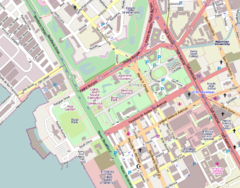
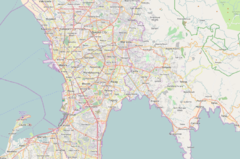

0 Response to "National Museum of Fine Arts of the Philippines and Worlds Fair"
Post a Comment